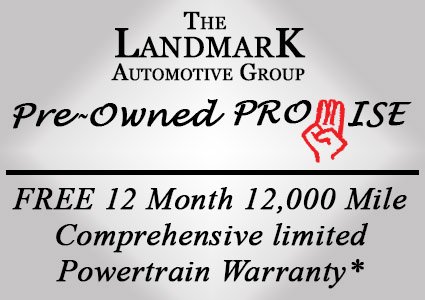
Ford Lease Terminology & Info in Springfield, IL
More Car, Less Money!
Key Leasing Terminology
- Acquisition Fee: The charge for processing a lease. Even though this seems like a made up fee, it may not be negotiable as the dealer has to pay this to the leasing company.
- Capitalization cost (cap cost): The total price of the vehicle, which the lessor uses to calculate the amount that the customer will be paying. This is similar to the purchase price of a vehicle that's sold.
- Cap Cost Reduction: This is the amount that you pay when signing the lease, in addition to any separate fees that are assessed. When you pay a larger sum initially, monthly payments will be lower. A smaller cap cost reduction means a higher monthly payment. The value of your trade-in (if any) can be applied as part of this amount.
- Closed-End Lease: A lease that fixes the vehicle's residual value, stating it in the contract. Most vehicle leases are closed-end, meaning the customer won't owe additional funds at the end of the term if the car turns out to be worth less than anticipated.
- Dealer Participation: Money that the dealer contributes to lower the price of the vehicle. Any dealer contribution is applied to the cap cost reduction.
- Disposition Fee: Money that must be paid at the end of the lease to cover costs of preparing the returned vehicle for sale. This fee is disclosed in the lease paperwork.
- Early Termination Fee: A penalty assessed if you end the lease contract earlier. The penalty is likely to be hefty but it is included in the lease paperwork.
- End-of-Lease Purchase Price: If you choose to purchase the vehicle at the end of the lease, the End-of-Lease Purchase Price is disclosed in the lease paperwork.
- Excess Mileage Charge: A per-mile amount charged if you drive the vehicle more than the maximum stated in the lease. If you expect to drive farther than the contract allows, you can usually negotiate a lower figure for the excess miles or pay for extra miles up front.
- Excess Wear-and-Tear: If the vehicle is returned in good condition, there should be no extra charge. A certain amount of wear-and-tear is permitted. Significant body damage or evidence of improper maintenance could trigger additional charges.
- Gap Insurance: Gap insurance covers the difference between the cash value of the vehicle and what you still owe on the lease contract. Some leases include this in the contract.
- Lessee: The person who leases a vehicle.
- Lessor: The dealer that leases a vehicle to a customer.
- Purchase Option: The option to buy the vehicle that you've leased, at the end of the lease term. This price is usually stated in the lease documents.
- Residual Value: The lessor's prediction of what a vehicle is likely to be worth at the end of the lease. Residual values may be supplied for vehicles that are 24, 36 or 48 months old.
- Subvented Lease: Think "great deal." A subvented lease is similar to cash back or discount financing. The manufacturer "subsidizes" part of the total price, by use of a special incentive -- a low interest rate, higher-than-normal residual value or a discount provided by the manufacturer.
Lease Tax Changes in Illinois

Starting Jan. 1, Illinois is cutting the lease tax on new cars and trucks. New lessees could save up to 50 percent in taxes. That's right, up to 50 percent!
Everyone loves a tax break. This is big news you can take to the bank. Even better, leasing your next new car or truck allows you to afford more for less money. With an automobile lease, you do not pay for the entire car, you only pay for what you use. That means lower monthly payments for the same car, or more car then you ever thought possible.
Stretch your dollars, now lower taxes mean less cost to lease your next vehicle. With leasing you can get a new car every three or four years, the latest automobile technology more often, state of the art safety features, outstanding fuel economy, and low maintenance costs.